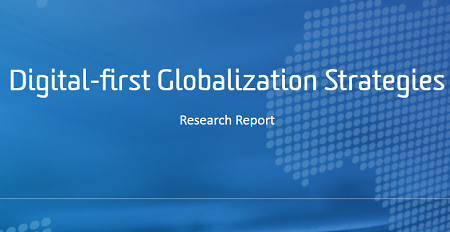The majority of brands are still ignoring the benefits of a digital-first globalisation strategy, and instead focus their efforts on deploying a local sales team when entering new markets, according to new research.
A report published today by content creation firm SDL showed that 80% of companies surveyed have global expansion plans over the next two to three years – approximately a third of companies are planning to expand into up to three countries, while another 30% plan to expand into up to as many as six countries.
The report highlights that while many companies see the benefits of a digital-first globalization strategy, which is considered less risky in terms of execution and can result in accelerated growth in a new market, two thirds of respondents prioritized deploying local sales representation first. This is despite the clear value respondents placed on content with the majority stating it leads to better customer satisfaction and retention, contributes to better customer experience, and increases brand consistency and revenue.
“Global enterprises are hindering their expansion plans by focusing on a sales-first approach, before understanding their customers’ needs. In a digital world, improving customer experience and reach through relevant, culturally nuanced and localized content, wherever the customer is located, is critical to business success,” said Thomas Labarthe, Chief Revenue Officer, SDL. “However, many companies have yet to implement digital-first globalization strategies and risk losing the huge benefits of using personalized content in the customers’ own language to build up their sales pipeline in new markets.”
More content, more languages, less time
In the research, three main content strategies modern global enterprises deploy emerged: increasing content production; translating into more languages; and translating more content faster. 40% of respondents believe content volumes will increase by more than 30% in the next two years. Approximately 40% of a company’s content is expected to be translated within 24 hours and the demand for turnaround times in the legal, advertising and marketing sectors is higher than other types of content.
Further illustrating the difficulty enterprises face, the research highlighted that of the companies questioned, on average they produce external digital content in approximately 15 languages, and companies with revenues between $500m-$1b deliver it in 21 languages. Companies from regulated sectors, where the rigorous requirements continue to evolve and expand, deliver external digital content in more languages than non-regulated industries. For internal digital content, on average, companies deliver it in more than 12 languages. And on average, companies use more than 14 content repositories to fulfil their requirements.
Almost three-quarters (70%) of companies said they can personalize content based on demographic, 64% can personalize based on behavioral segmentation and 55% personalize on employee-based data.
In more than 70% of cases, the decision to go global is taken by the executive leadership team. However, a clear disconnect exists between executive management, where 60% of respondents believed there is consistent content delivery across the enterprise, and those executing the strategy on the ground, VP and C-level respondents, where only 45% thought that was the case.
“Building autonomous content supply chains capable of delivering personalized content across multiple languages and to any device is a key component of a global growth strategy. However, enterprises appear to struggle to execute their plans if they do not have adequate digital globalization plans and support. Too often the customer experience is disjointed across different platforms and different regions,” said Thomas Labarthe, Chief Revenue Officer, SDL. “By investing in machine translation and automation technologies, alongside services that enable nuanced content, global companies can rapidly translate and personalize content to ensure they are maximizing the impact of their content on a global scale.”
Kantar conducted the research on behalf of SDL with more than 300 executives, seeking their insights about the evolving digital-first environment. These business leaders were asked to assess their strategies, the strengths and weaknesses of their organizations, and to describe the trends that are defining their digital future. The interviewees worked in marketing, localization, IT or digital transformation across a variety of industries.

